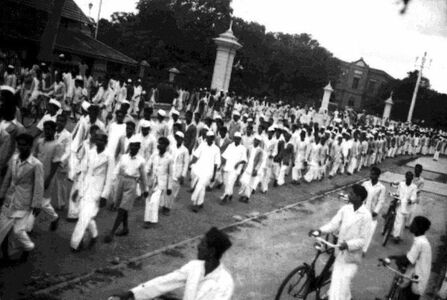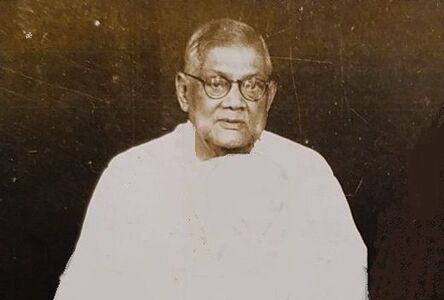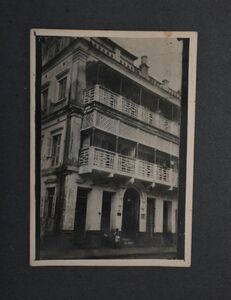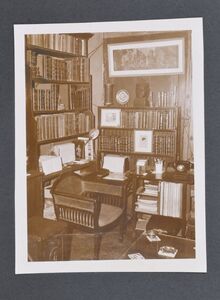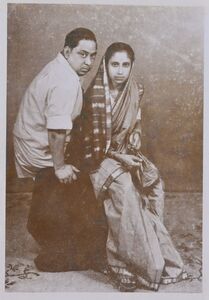

Upendra Nath Kumar took up from his Great Grand Father Ramnarayan Roy Chowdhury, who was a Dewan in the Fort William to establish a connect with the British and started a trading business under the stylus W N Kumar & Sons, spelling his name with a ‘W’ as Wpendra.
In no time he amassed a fortune and purchased a two storey house at 52 Mohan Bagan Row in the vicinity of Shyambazar.
Soon he opened a Departmental Store, believed to be the first in Calcutta at the ground floor of a building in Shymbazar Crossing.
The Store housed foreign goods, primarily British from Silver ware to Swiss pocket watches.
The coalescence of British and Indian culture resulted in the emergence of a new Babu class of urbane Indians, whose members were often bureaucrats, professionals, traders. They usually belonged to upper-caste Hindu communities and Wpendra Nath belonged to this community. In the 19th century, the Bengal Renaissance brought about an increased sociocultural sophistication among city denizens.
Swadeshi movement was formally started from Town Hall at Calcutta on 7 August 1905 to curb foreign goods by relying on domestic production. Mahatma Gandhi described it as the soul of swaraj (self-rule).
The Swadeshi movement was a self-sufficiency movement that was part of the Indian independence movement and contributed to the development of Indian nationalism. The departmental Store W N Kumar & Sons was ransacked and set fire leading to the closure.
The partition of Bengal in 1905 along religious lines led to mass protests, making Calcutta a less hospitable place for the British. The capital was moved to New Delhi in 1911. Calcutta continued to be a centre for revolutionary organisations associated with the Indian independence movement.
The fortune of W N Kumar started to fall. His eldest son, Prafulla Kumar tried to hold on to his father’s business.
His second son Sufulla Chandra Kumar set sail for Rangoon where he started a Bakery Shop. His third son joined the Tea firm A Tosh and Sons where till his death he was engaged as the Manager of the Sealdah Shop.
Nirmal Chandra Kumar, born in Calcutta, Bengal, in 1917 was the eldest of seven children.
After schooling at Mitra Institute, Kolkata he wanted to pursue his studies but his father did not support him. The reason is not clear as Nirmal Chandra to protect his parents never divulged the truth. He left home to join Bangabasi College and was in search of a Mess Accommodation. Mess Bari is an urban Bengali coinage.
It is born off the mess, the name for the area where military personnel lived together and Bari in Bengali meaning home. Many well-known personalities in those days resided in such accommodation. Sarat Chandra Chattopadhyay, Bhibhutibhusan Bandyopadhyay, Nirad C Chaudhuri, Sibram Chattopadhyay and others. But it was difficult to get a seat as they were long term arrangement. As Nirmal Kumar went from one to another he became frustrated as he was faced with refusal. Then as luck would have had it, a gentleman leaving a Mess Bari found the shattered youth standing at the ground floor counter and having pity gave him an address in Taltala of a Paying Gust Accommodation, warning him that it would be costing on the higher side. But Kumar was delighted as he did not want to return home. Armed with the address he trudged from Sealdah to Taltala.
In the early 1930s he shifted to this address: 79/23 Lower Circular Road and stayed here for the rest of his life, making this address famous. He got himself admitted to Bangabasi College and as a way of earning started to take tuition for students in the vicinity. He did odd jobs and tried his hand at writing, which in his own words, he failed miserably. Thereafter, he started collecting rare books, which became his passion. This he turned into an establishment, under the stylus ‘KUMARS’. He was successful at this along with being an antiquarian and offering advice on rare books, maps and prints to different institutions, libraries and individuals for which he was paid a fee. He helped build many individual libraries for well-known personalities.
During the 2nd World War the fortune of the family reached its lowest ebb and Prafulla Chandra Kumar, the father of Nirmal Chandra Kumar sold the house at Mohan Bagan Row and shifted to 36 Durga Charan Doctor’s Lane, opposite to Entally Market. Having no means of income the family faced hardship and Nirmal Kumar invited his father and his family to move to his house at Lower Circular Road where the accommodation had been increased by the Land Lord. His uncles Suffulla Chandra Kumar faced the wrath of the war and had to leave Rangoon to come and stay at my father’s house. Sailendra Nath Kumar joined thereafter and it became a Joint Family all under one roof.
His parents arranged for his marriage to Karuna, who was a teacher in a school, in a sleepy railway hamlet, called Adra, which is in the border of Bengal and Bihar. Their thinking was that they would make a good pair as books and teaching go together.
He continued working on his collection of rare books, prints, maps, manuscripts and other materials. The establishment from its formal opening in 1945, until the death of Kumar in 1976 was Calcutta’s pre-eminent antiquarian establishment.
Whether you wanted books on art, travel, ornithology, botany, history, literature, mountaineering, mutiny, religion; KUMARS was the place to go. Under Kumar’s care, it’s Art and Indology section was its greatest strength, and the tradition of bohemian bookselling was carried forward into the 1950s and 1960s.







